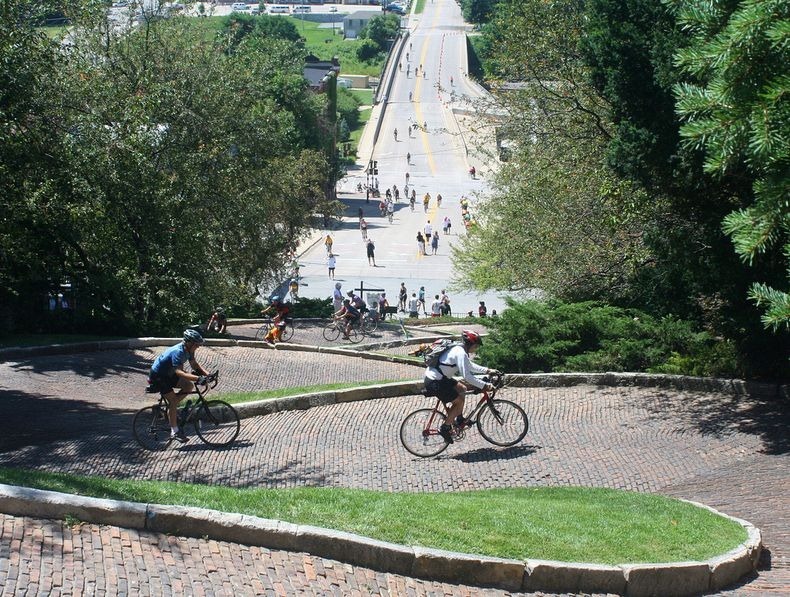“The world’s most crooked street” is a contested title. While most publications recognize the Lombard Street in San Francisco, California, as the one having the most bends and turns, Ripley's Believe It or Not had once recognized Snake Alley in Burlington, Iowa, as “the Crookedest Street in the World” after Robert L. Ripley saw the street in person in the 1940s. The idea was novel enough, however, San Francisco's Lombard Street beats it by several turns.
Snake Alley's block-long serpentine switchback has five half-curves and two quarter-curves over a length of 275 feet, ans rises 58.3 feet (17.8 m), a 21% grade. It was built by the town's German founders in 1894 as an experimental street design to overcome the physical limitations and steep elevation of Heritage Hill. The road was intended to link the downtown business district and the neighborhood shopping area located on North Sixth Street, of which Snake Alley is a one-block section. Three German immigrants conceived and carried out the idea of a winding hillside street, similar to vineyard paths in France and Germany. The street was completed in 1898, but was not originally named Snake Alley, as it was considered part of North Sixth Street. Some years later, a resident noted that it reminded him of a snake winding its way down the hill, and the name stuck.
Snake Alley is paved with limestone and blueclay bricks. Bricks were laid at an angle to allow horses better footing as they descended. Unfortunately, riding horses back up the alley often resulted in a loss of control at the top; for this reason, even to this day, Snake Alley remains a one-way street, with all traffic heading downhill. However, once a year, a bike race is organized – the Snake Alley Criterium – where riders race uphill.






No comments:
Post a Comment